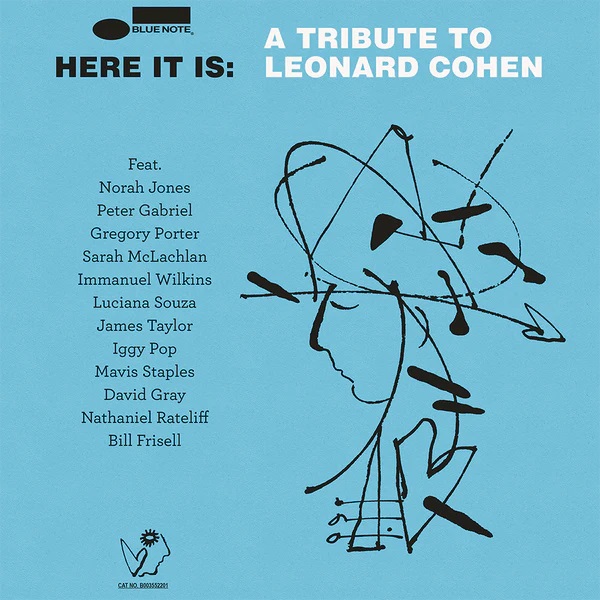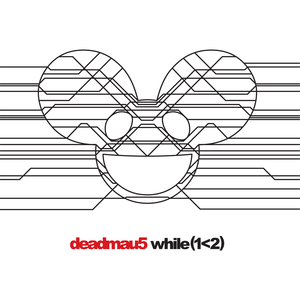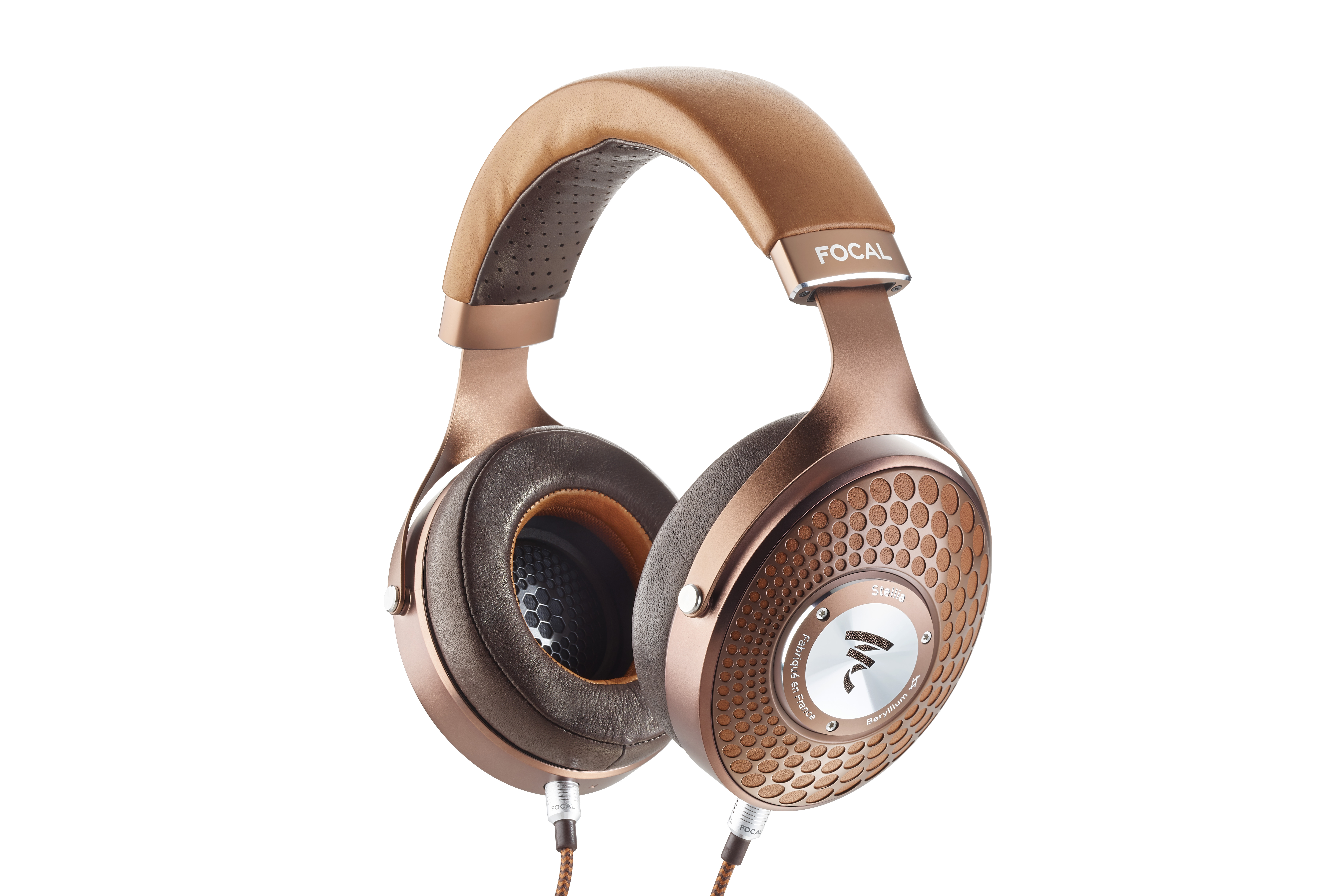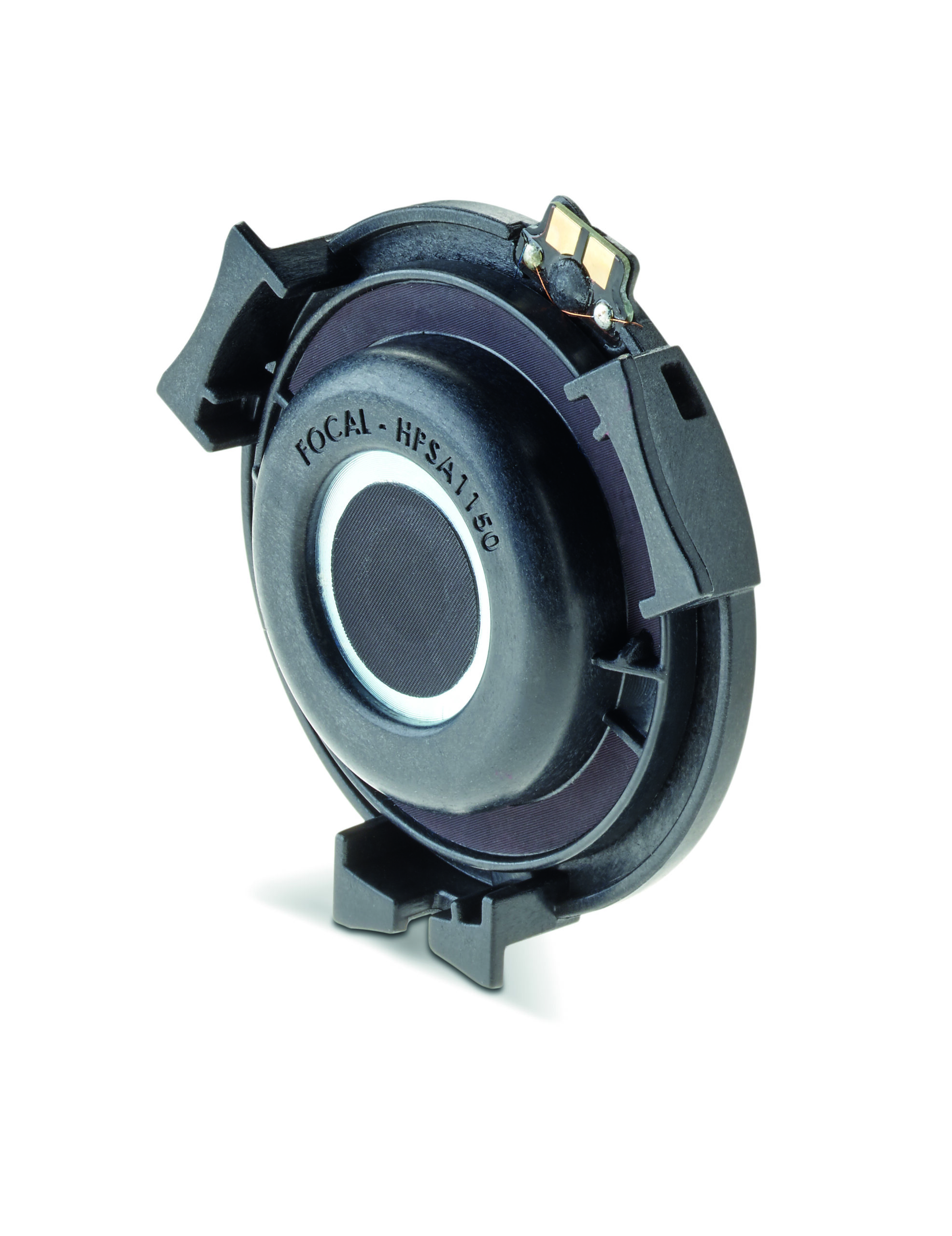Focal Stellia Headphones: Luxury Closed Back Headphones That Do Everything Right
Review by Jamie Gillies
I grew up a headphone listener. The music of my youth was played through boomboxes, small desktop systems, Walkmans and Discmans with earbuds and plastic yellow headphones, and iPods, all with headphones attached. I love my two channel audio system and great sounding hi-fi gear but if I am being honest with myself, music lives in my head. But I have never committed to really incredible headphones. I’ve had the usual mid-priced cans that you can get at a box store, everything from Bose to Sennheiser to Beyerdynamic. Only recently did I get a pair of Sennheiser HD800 headphones, the original pre-800S version, that helped start the audiophile headphone craze in the 2000s. Despite hearing Sennheiser, Audeze and Focal headphones, I had never spent the money to get one of their legendary models. Part of it is that I really wanted to build a hybrid system. I thought I did not want a separate headphone amp and I really wanted to use my headphones within my two systems: my dedicated two-channel audio system and my desktop streaming system with small desktop speakers. But there has always been a challenge: most amplifiers dedicated to speakers do not have very powerful headphone amp sections and most decent refined headphones, especially electrostatics, need the additional power of dedicated headphone amps.
So how do I listen to high-end refined headphones with the preamplifiers I have, namely a Marantz 2235B amp with a great 1970s headphone input, and a NAD C165BEE preamp with a pretty good headphone input? They simply are too underpowered to drive most Audeze and Sennheiser cans. Enter the Focal Stellia. What interested me greatly is that here is a closed back headphone that does not need much power to drive. At only 35 ohm nominal impedance, the Focals can deliver that full sound regardless of the source. So you can connect them to a computer or an iPad, a receiver or DAC with headphone jack, or something more dedicated for headphone listening. They are designed for versatile high end listening.
In the process of wanting to review the Stellias, my listening has been reverting back to headphones and I decided to purchase a classic Woo Audio WA6 headphone amplifier with upgraded tubes and power cable. I had been listening to this with Sennheiser HD800 headphones for a few weeks before I put the Focal Stellias through a complex series of headphone listening experiences, comparing and contrasting between my vintage preamps that have pretty good headphone amp sections, and the dedicated Woo Audio headphone amp. I also decided to put the Sennheisers and the Focals into a head-to-head review. They sound very different but both give fantastic audio results.
Some facts and specifications before I get started. The Stellia are expensive, retailing at $3999 Canadian, but I have never seen a more luxurious product. The box and gear that comes with it are beautiful to look at with the feel of quality, heft, and luxury. Their design takes some of Focal’s most known speaker attributes, such as its beryllium drivers, and develops that into a headphone listening experience including a pure beryllium dome and copper voice coil.
Focal also developed the Stellias with electrodynamic speaker drivers capable of full frequency response but able to be driven with a low acoustic load.
Critical Listening
My expectations for the Stellias were pretty high. I achieve excellent sound through my speakers and I think my gear and the various cables and tweaks along the way have given me an excellent sound presentation. But how does that translate over to headphones. Unlike some two channel audiophiles, I like listening to headphones, especially if it can relay the holographic depth of a good speaker. The Stellias presented a three-dimensional soundstage with headphones that I had never heard before. They simply went beyond the music by creating a layered and complex presentation. If I had to describe the sound, it would be this: midrange detail that accentuates a warmth and musicality that does not sound analytical, and a soundstage that gets to the inner soul of the music but without sacrificing or limiting the soundstage.
 My first music tests were albums by Patricia Barber. Audiophiles know that her close mic’d recordings are prized for their incredible and careful production, massive dynamic range, and studio feel. The problem is that they are so transparent that in some systems, they can show every flaw in our equipment including positioning of speakers, tweeters, and even wall and room reflections. But they make for great recordings to test your gear. In my years of using certain recordings to ‘hear’ your system, if you can get Patricia Barber’s voice to sound just right, most other vocal recordings sound good as well.
My first music tests were albums by Patricia Barber. Audiophiles know that her close mic’d recordings are prized for their incredible and careful production, massive dynamic range, and studio feel. The problem is that they are so transparent that in some systems, they can show every flaw in our equipment including positioning of speakers, tweeters, and even wall and room reflections. But they make for great recordings to test your gear. In my years of using certain recordings to ‘hear’ your system, if you can get Patricia Barber’s voice to sound just right, most other vocal recordings sound good as well.
With my Marantz amp, the Stellias performed very well. I got a similar soundstage out of the headphones that I get out of my speakers. It presented vocals as slightly recessed but with enough separation from the instruments to be both musical and detailed. They were not as fussy and exacting as a pair of studio headphones. Ode To Billie Joe (from Barber’s Café Blue SACD) and This Town (from the DSD256 download from Clique!) sounded smooth, but with the depth of soundstage I am looking for. For audiophiles who like that kind of depth, the Stellias delivered. But to be clear, they are not mushy and they are also not too far forward. You hear everything on the recording but with a hint of warmth that makes listening effortless.
 I then tried Sweet Pea Atkinson’s gem of an album Get What You Deserve (2017 Blue Note Tidal Masters). This is a Don Was-produced project as head of Blue Note Records featuring many of the Was (Not Was) musicians. Ain’t No Love In The Heart Of The City, Atkinson’s cover of Bobby ‘Blue’ Bland’s 1974 classic, sounded well balanced and the background vocalists blended really well with Atkinson’s soul survivor vocal stylings. Atkinson sings on so many classic albums that almost everyone has heard him. But here he is backed by a stellar band. The Stellias had me bopping along to this great under-appreciated gem, especially the fantastic drumming by soul/jazz stalwart James Gadson, and some great Keb’ Mo’ solos.
I then tried Sweet Pea Atkinson’s gem of an album Get What You Deserve (2017 Blue Note Tidal Masters). This is a Don Was-produced project as head of Blue Note Records featuring many of the Was (Not Was) musicians. Ain’t No Love In The Heart Of The City, Atkinson’s cover of Bobby ‘Blue’ Bland’s 1974 classic, sounded well balanced and the background vocalists blended really well with Atkinson’s soul survivor vocal stylings. Atkinson sings on so many classic albums that almost everyone has heard him. But here he is backed by a stellar band. The Stellias had me bopping along to this great under-appreciated gem, especially the fantastic drumming by soul/jazz stalwart James Gadson, and some great Keb’ Mo’ solos.
 I then switched in the Sennheiser HD800 cans into the Marantz amp. The Marantz did not have the oomph to really drive these and I found the same recordings thinner and a little dryer than the Stellias. It wasn’t even a contest. The Sennheisers have a nominal impedance of 300 ohms. They clearly needed more power.
I then switched in the Sennheiser HD800 cans into the Marantz amp. The Marantz did not have the oomph to really drive these and I found the same recordings thinner and a little dryer than the Stellias. It wasn’t even a contest. The Sennheisers have a nominal impedance of 300 ohms. They clearly needed more power.
 The Stellias, when connected to the Woo WA6, performed beautifully. Gravity from John Mayer’s Continuum was so smooth that it outperformed my speakers. It just had that perfect blend of vocal detail and warmth. I then tried some EDM to give the cans a workout with deadmau5’s while(1>2). This is a great album to hear those electronic microdynamics, in a similar vein to the film scores of Trent Reznor and Atticus Ross and Ludwig Göransson. I thought the Stellias rendered EDM and pop beautifully and without sacrificing detail for warmth and musicality.
The Stellias, when connected to the Woo WA6, performed beautifully. Gravity from John Mayer’s Continuum was so smooth that it outperformed my speakers. It just had that perfect blend of vocal detail and warmth. I then tried some EDM to give the cans a workout with deadmau5’s while(1>2). This is a great album to hear those electronic microdynamics, in a similar vein to the film scores of Trent Reznor and Atticus Ross and Ludwig Göransson. I thought the Stellias rendered EDM and pop beautifully and without sacrificing detail for warmth and musicality.
 I also found a very good test album for different styles of vocals, the 2022 Blue Note album Here It Is: A Tribute To Leonard Cohen (Tidal Masters). This album has a great selection of vocalists and some phenomenal jazz instrumentalists reinterpreting Cohen classics. The Stellias rendered vocals by Norah Jones, Peter Gabriel, Gregory Porter, Sarah McLachlan, James Taylor and even Iggy Pop with such an inner warmth that I was constantly closing my eyes to walk my way through Cohen’s lyrics by all these different interpreters. Gabriel’s voice in particular, which I have always found to be very difficult to get just right with high resolution audiophile gear, was remarkable. Hats off to Greg Calbi’s superb mastering of this album, one of the best non-audiophile vocal albums I have ever heard.
I also found a very good test album for different styles of vocals, the 2022 Blue Note album Here It Is: A Tribute To Leonard Cohen (Tidal Masters). This album has a great selection of vocalists and some phenomenal jazz instrumentalists reinterpreting Cohen classics. The Stellias rendered vocals by Norah Jones, Peter Gabriel, Gregory Porter, Sarah McLachlan, James Taylor and even Iggy Pop with such an inner warmth that I was constantly closing my eyes to walk my way through Cohen’s lyrics by all these different interpreters. Gabriel’s voice in particular, which I have always found to be very difficult to get just right with high resolution audiophile gear, was remarkable. Hats off to Greg Calbi’s superb mastering of this album, one of the best non-audiophile vocal albums I have ever heard.
 I swapped in the Sennheisers and here is where there really is a fairly stark difference in sound quality. The open back Sennheisers have incredible clarity, especially on modern music, and I liked how I could hear different separation of instruments on the same tracks that I tried with the Stellias. That neutrality which Sennheiser is known for gives the listening experience an in-the-studio feel. They also have a massive soundstage, like you are in the middle of the music. But they just did not deliver the same level of musicality. And that is the key difference here: if you are looking for a headphone that gives you hours of listening enjoyment, without fatigue, then the Stellias bested the Sennheisers.
I swapped in the Sennheisers and here is where there really is a fairly stark difference in sound quality. The open back Sennheisers have incredible clarity, especially on modern music, and I liked how I could hear different separation of instruments on the same tracks that I tried with the Stellias. That neutrality which Sennheiser is known for gives the listening experience an in-the-studio feel. They also have a massive soundstage, like you are in the middle of the music. But they just did not deliver the same level of musicality. And that is the key difference here: if you are looking for a headphone that gives you hours of listening enjoyment, without fatigue, then the Stellias bested the Sennheisers.
My love for these headphones continued to grow the more I listened to different kinds of music. The only quibble I have is not Focal’s fault necessarily. The cables are well designed and quality wise, they deliver. The non-balanced ¼ inch cable is only about 1 metre long so you have to be very close to the amp to listen. This may be too short for any kind of listening in a chair or at a bigger desk. I sense that Focal along with other brands recognize that the enthusiasm for after-market cable upgrades is part of the high end headphone experience. So they likely would perform potentially better and offer additional flexibility with the various cable companies that specialize in these cables. From the ones I have tried, Cardas makes superb cables and I suspect they have ideal matches to the Focal Stellias that you can select to cater to your listening tastes. The other concern about these kinds of headphones is that the cables can add some microphonics. I did not notice this but do take caution to keep the headphones, especially when connected to tube and vintage amps, away from WiFi routers, cell phones or tablets with cellular capability, powered hard drives and devices that can emit higher levels of EMI. These are highly resolving detailed headphones and they can pick up interference that other headphones do not.
Final Verdict
The Focal Stellia headphones are the best all-around pair of headphones I have ever heard. They do everything well. They have that transparent resolution that headphone aficionados crave, they offer ample but not overwhelming bass, and they render every vocal I threw at them beautifully and in many respects, the best I had ever heard. But where they differ from their peers is that while other headphones, both open and closed back, achieve transparency, bass response, and vocal reproduction perhaps as good or better, the Stellias are able to present a refined, natural warmth that, to these mid-40s ears, was remarkable. The Stellias have the best midrange I have ever heard, including in comparison to many speakers. I simply lost myself in the music, whether that was dynamic audiophile vocal recordings, rock and pop, jazz instrumentals and vocalists, classical and EDM. In direct comparison with the Sennheiser HD800 headphones, the Stellias won the battle 39 times out 40 when listening to the same tracks or albums. And I love my Sennheiser HD800 headphones! The Flagship Focal Utopias are among the most sought after and highly prized open back headphones on the market. The Stellias however are one of the best versatile closed back headphones, creating a listening environment that, while not as vast a soundstage as some open backs, has so many layers and is completely encompassing. The Stellias are like sitting in the perfect listening position in an audiophile sound room every time. I find open back headphones are more like wading into the soundstage of a recording. For audiophiles accustomed to 2-channel speaker system audio, I think the Stellias recreate a sound room better than any other headphone I have ever heard. The Stellias are simply a different listening experience that take you inside the heart of the music where you stop listening for what these headphones can do and start listening to what the music is doing. In other words, the Focal Stellia headphones transported me on a musical journey in the same way amazing speakers can leave you awestruck. I stopped listening for things in the music and started listening to the music: that’s musicality. At $3,999 Canadian, these are a bespoke luxury set of headphones. But treat your ears to what they can do. I, for one, want to be able to listen to music for years to come and sometimes you just have to save up for something great. Bon travail, Focal! Bravo!
Review loan courtesy of Focal Naim.
Specifications:
https://focalnaimamerica.com/products/headphones/_item/stellia-chocolat




Great review Jamie! I always loved focal speakers, so I’m not surprised by your impressions at all. A good read!
Very well done review. As an owner of Stellias, I can only say buy the best and cry once. These are headphones that feel and perform like reference-level capital equipment while still being tremendously satisfying as a personal luxury item – both difficult design goals to achieve individually, let alone strike a perfect balance between in a product in the personal audio space. These are so darn good you’re still seeing reviews some 5 years after introduction. That should tell you what you need to know. Happy listening.